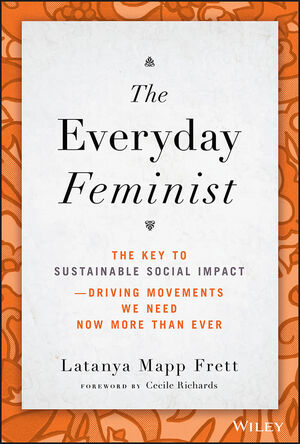Interests
 A Square Peg In A Round Hole By Rose Madeline Mula
A Square Peg In A Round Hole By Rose Madeline Mula
Rose Madeline Mula Writes: "I haven’t been inside a store for two years. I don’t miss any of them. Not a bit. I am delighted to have Instacart deliver my groceries — and Amazon everything else I could possibly want — to my door on demand, without having to navigate aisle after aisle searching for a mango, or that foot callus file I always wanted but could never find. It’s like having my own Aladdin’s lamp! Most of my neighbors in my condo building have mats at their doors that are truly welcoming. They say “So glad you’re here!” or “Welcome! Come in and cozy up!” Mine says “Oh, no! Not you again!” (I don’t mean it, of course; but I can never resist humor.)" more »
 Jo Freeman Reviews The Everyday Feminist: The Key to Sustainable Social Impact - Driving Movements We Need Now More Than Ever
Jo Freeman Reviews The Everyday Feminist: The Key to Sustainable Social Impact - Driving Movements We Need Now More Than Ever
"This is a complex book. It combines social theory, several personal stories, and a little bit of memoir into a very readable text. The title certainly catches your attention, as you ask what is an everyday feminist. The author offers an answer in the first chapter – several answers. She’s an activist. She works for her community, not just herself. She leads but doesn’t think of herself as a leader. She is an ordinary woman with a passion for transformational change. She mostly comes from marginalized communities. She is politically astute. She takes risks to do the right thing. She is transparent and accountable, caring and generous." more »
 Ferida Wolff's Backyard: Nature’s Jigsaw Puzzles
Ferida Wolff's Backyard: Nature’s Jigsaw Puzzles
Ferida Wolff comments on Nature’s Jigsaw Puzzles: Recently, I was given a thousand-piece puzzle that showed lots of birds, which I also love. There were robins, cardinals, hummingbirds, bluejays, and sparrows all enjoying the field of wildflowers that was the puzzle’s background. So colorful. I sat down and got to work. The puzzle wasn’t easy. It took me lots of days to finish but while I was working on it, my backyard seemed to have its own bird puzzle."As our communities become more urbanized, the natural features around us tend to get pushed into the background and often go unnoticed. In “Ferida’s Backyard,” I look at the details of nature locally, from a neighborhood perspective, frequently from a backyard vantage point. It excites me to share what I see. An awareness of the natural connection can beautifully enhance our lives." more »
 An Undocumented Childhood by Rose Madeline Mula
An Undocumented Childhood by Rose Madeline Mula
Rose Mula Writes: Some people never leave home without their American Express card; I never leave home without a camera. Digitized pictures of the twenty-five countries and forty-plus states of America that I’ve visited since my first tour of exotic New Hampshire constantly flash on my computer monitors and digital frames throughout my home, helping me relive the magic every day. The galleries on my tablet, IPod, and phone teem with images of everything and everyone I love. more »






